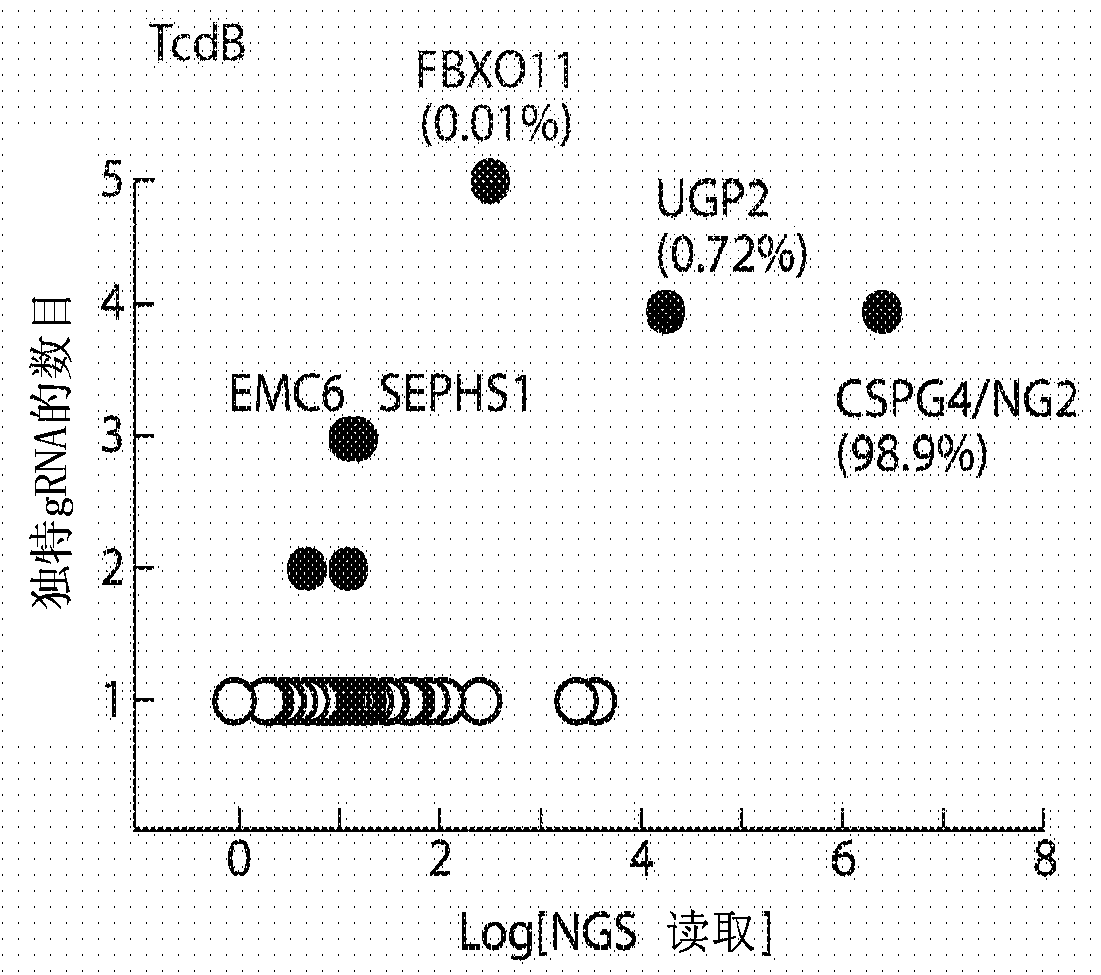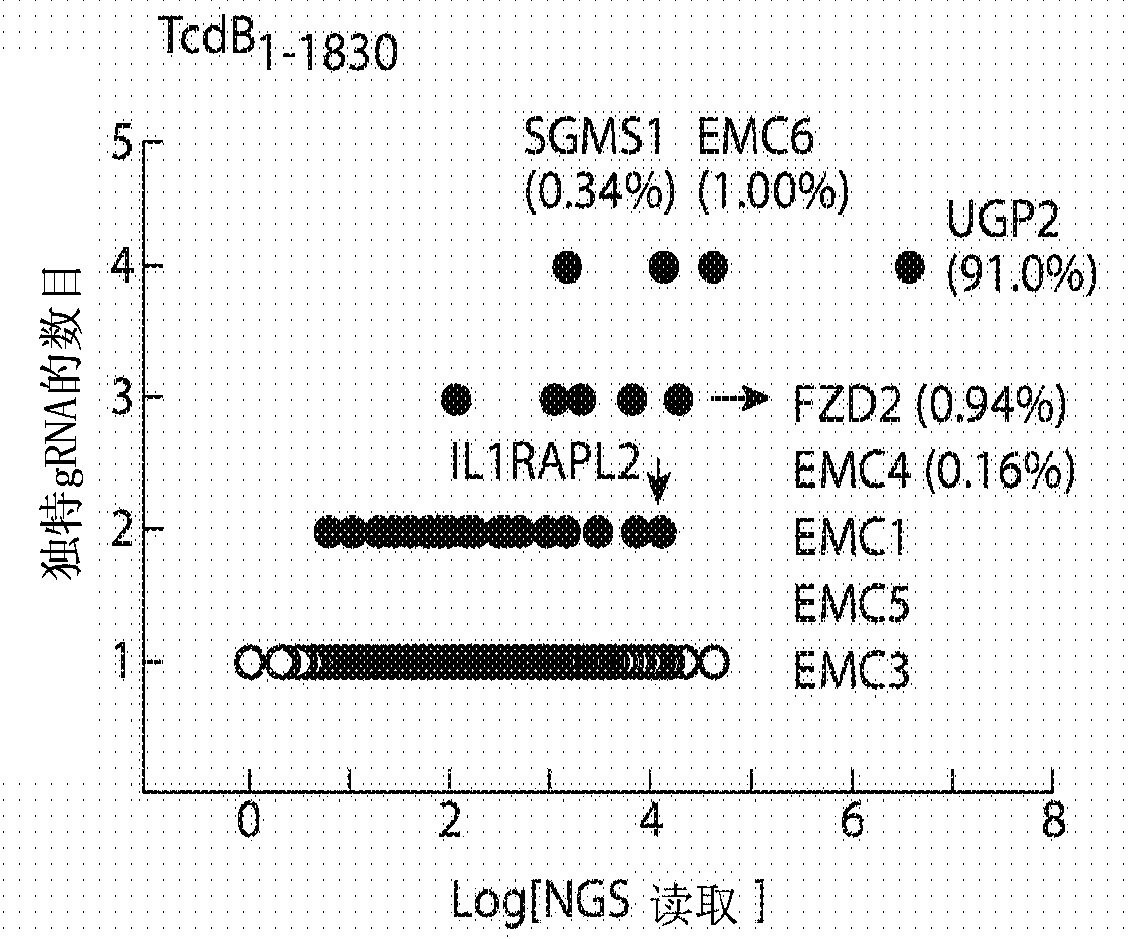Compositions and methods for inhibiting wnt signaling
A composition and polymer technology, applied in the fields of botany equipment and methods, biochemical equipment and methods, chemical instruments and methods, etc., can solve the problem of high disease recurrence rate
- Summary
- Abstract
- Description
- Claims
- Application Information
AI Technical Summary
Problems solved by technology
Method used
Image
Examples
Embodiment
[0185] Genome-wide CRISPR / Cas9 screen reveals Frizzled receptor as the receptor for Clostridium difficile toxin B
[0186] To identify physiologically relevant receptors and other host factors involved in TcdB action, two unbiased genome-wide mutagenesis screens were performed using the CRISPR (clustered regularly interspaced short palindromic repeats) / Cas9 approach. screen) (15, 16). The C-terminal portions of TcdA and TcdB contain a region called the combined repetitive oligopeptide (CROP, Figure 6, panel A), which binds carbohydrates and mediates the binding of toxins to cells (17). Recent studies have shown the existence of additional receptor binding domains besides CROP (18-21). Indeed, a truncated toxin lacking CROP (TcdB 1-1830 ) still induced cell rounding in a variety of cell lines at clinically relevant picotoxin concentrations (Figure 6, panels B-E) (22). Since CROP-carbohydrate interactions can mask the contribution of specific protein receptors, full-length Tc...
PUM
 Login to View More
Login to View More Abstract
Description
Claims
Application Information
 Login to View More
Login to View More - R&D
- Intellectual Property
- Life Sciences
- Materials
- Tech Scout
- Unparalleled Data Quality
- Higher Quality Content
- 60% Fewer Hallucinations
Browse by: Latest US Patents, China's latest patents, Technical Efficacy Thesaurus, Application Domain, Technology Topic, Popular Technical Reports.
© 2025 PatSnap. All rights reserved.Legal|Privacy policy|Modern Slavery Act Transparency Statement|Sitemap|About US| Contact US: help@patsnap.com



